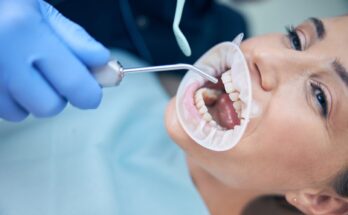Gums are one of the major components of your periodontal ligament that anchor your tooth firmly in position. Their scalloped appearance enhances your oral aesthetics. Any discrepancy in the shape of your gum line can be displeasing due to exposure of your tooth roots. This is known as the gum recession.
The family dentist in Hanover and their team are dedicated to the health and wellness of your gums since they play a vital role in maintaining the integrity of your oral cavity.
What is meant by gum recession?
Gum recession is a clinical term for receding gums. The margins of your gum tissue that encircle the teeth wear away or pull back, exposing the tooth roots. This leads to a deep space between the gums and the tooth surface, known as a gingival pocket. These pockets favor increased bacterial colonization and plaque accumulation.
What causes gum recession?
Several factors cause your gums to recede. These include:
Family history
You are at an increased risk of gum recession if a member of your family suffers it.
Periodontal disease
Bacterial infiltration can erode the gums and the other components of PDL (periodontal ligament), leading them to detach and recede from the tooth surface, exposing the roots.
Aggressive tooth brushing
Using a hard-bristled toothbrush with extreme force can damage the gums.
Poor oral care
Inadequate brushing, flossing, and rinsing can pave the way for disease-causing bacteria and plaque buildup.
Hormonal changes
Women who are prone to hormonal fluctuations during puberty, pregnancy, or menopause can cause the hardening of plaque that forms calculus.
Tobacco use
Tobacco can release harmful toxins that irritate the gingival lining, causing infection and inflammation. Furthermore, it delays wound healing in tissues and the ability to repair itself.
Malalignment
Crooked, crowded, and malaligned teeth can favor plaque accumulation and make brushing and flossing challenging.
What are the signs and symptoms of gum recession?
The most striking feature of gum recession is the exposure of tooth roots. Other warning signs include:
- Pain near the gum line
- Extreme sensitivity to hot and cold
- Discomfort while brushing and flossing your teeth
- Teeth appear longer than usual
- Gingival bleeding, especially while brushing
- Halitosis (bad breath)
How is gum recession treated?
Your dentist will treat gum recession using one of the following methods, which often depends on the cause of the condition and its severity. The options include:
Conservative approach
- Topical antibiotics
- Antimicrobial gels
- Antiseptic mouthwash
- Scaling and root planing
- Dental bonding to camouflage the area of recession for cosmetic purposes
- Orthodontic treatment
Surgical intervention
- Gum grafting
Failure to detect the cause of gum recession and manage it on time can be catastrophic to your oral health, leading to several complications.




